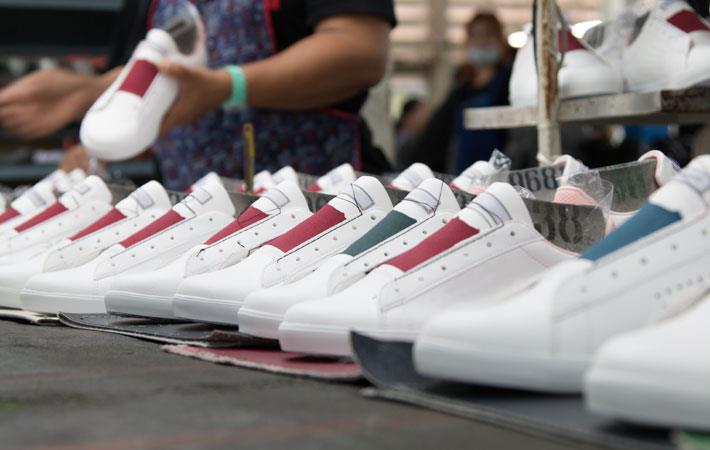Interviews
No instant EVFTA gains for Vietnam garment-footwear firms
17 Jul '19
3 min read

Pic: Shutterstock
Vietnamese textile, garment and footwear products will not enjoy immediate tariff cuts after the European Union (EU)-Vietnam Free Trade Agreement (EVFTA) comes into effect as most favoured nation (MFN) tariffs will replace generalised system of preferences (GSP) rates applicable to developing and underdeveloped nations, says a report from Bao Viet Securities Joint Stock Company (BVSC).
This implies that for the first few years of EVFTA's implementation, most local garment and footwear products will not benefit from the EVFTA because MFN rates for those products are higher than GSP rates of 9 per cent for garment products and 3-4 per cent for footwear products at present.
To be more specific, most apparel products that Vietnam has been exporting to the EU will see export tariffs eliminated gradually from the MFN tariffs of 12 per cent to zero in 3-7 years after the EVFTA comes into effect, a Vietnamese newspaper reported. Similarly, footwear products will be exempt from MFN tariffs of 12.4 per cent in 3-7 years.
Those that will enjoy the immediate tariff cut are products which are not the country’s major exports to the EU like fibre to make clothes and other materials to produce footwear.
In the footwear sector, the EU has pledged to eliminate 37 per cent of tariff lines for local footwear products exported to the EU as soon as the FTA enters into force. These include rubber/plastic waterproof shoes, slippers, raw materials and accessories.
However, when the tax cuts take effect, Vietnamese footwear, textile and apparel enterprises will benefit significantly from EVFTA because the tariff preferences under the EVFTA are stable, while GSP tariffs are volatile and can be changed annually, according to the BVSC report.
Besides, most countries that export textile and garments to the EU don't have FTAs with the EU. Therefore, if Vietnamese enterprises meet origin requirements, the EVFTA will open a great opportunity for Vietnam’s footwear, textile and garment exports.
The EVFTA does offer some flexibility on product origin. For instance, local garment firms can use fabric imported from countries like South Korea that have signed FTAs with the EU and Vietnam.
Although the rules of origin in the EVFTA are not as strict as in the Comprehensive and Progressive Agreement for Trans-Pacific Partnership (CPTPP), Vietnamese firms still face several challenges because most of them have just engaged in cutting and sewing steps while not producing fabric and yarn, the BVSC report said.
In addition, main production materials (fabrics) that most Vietnamese textile enterprises use originate from mainland China and Taiwan, which do not have trade deals with the EU.
Therefore, according to BVSC, to gain full benefits from the EVFTA, Vietnam must focus on developing the textile industry and the support industry for the textile and garment sector to supply enough materials for it. (DS)
This implies that for the first few years of EVFTA's implementation, most local garment and footwear products will not benefit from the EVFTA because MFN rates for those products are higher than GSP rates of 9 per cent for garment products and 3-4 per cent for footwear products at present.
To be more specific, most apparel products that Vietnam has been exporting to the EU will see export tariffs eliminated gradually from the MFN tariffs of 12 per cent to zero in 3-7 years after the EVFTA comes into effect, a Vietnamese newspaper reported. Similarly, footwear products will be exempt from MFN tariffs of 12.4 per cent in 3-7 years.
Those that will enjoy the immediate tariff cut are products which are not the country’s major exports to the EU like fibre to make clothes and other materials to produce footwear.
In the footwear sector, the EU has pledged to eliminate 37 per cent of tariff lines for local footwear products exported to the EU as soon as the FTA enters into force. These include rubber/plastic waterproof shoes, slippers, raw materials and accessories.
However, when the tax cuts take effect, Vietnamese footwear, textile and apparel enterprises will benefit significantly from EVFTA because the tariff preferences under the EVFTA are stable, while GSP tariffs are volatile and can be changed annually, according to the BVSC report.
Besides, most countries that export textile and garments to the EU don't have FTAs with the EU. Therefore, if Vietnamese enterprises meet origin requirements, the EVFTA will open a great opportunity for Vietnam’s footwear, textile and garment exports.
The EVFTA does offer some flexibility on product origin. For instance, local garment firms can use fabric imported from countries like South Korea that have signed FTAs with the EU and Vietnam.
Although the rules of origin in the EVFTA are not as strict as in the Comprehensive and Progressive Agreement for Trans-Pacific Partnership (CPTPP), Vietnamese firms still face several challenges because most of them have just engaged in cutting and sewing steps while not producing fabric and yarn, the BVSC report said.
In addition, main production materials (fabrics) that most Vietnamese textile enterprises use originate from mainland China and Taiwan, which do not have trade deals with the EU.
Therefore, according to BVSC, to gain full benefits from the EVFTA, Vietnam must focus on developing the textile industry and the support industry for the textile and garment sector to supply enough materials for it. (DS)
Fibre2Fashion News Desk – India
Popular News
Leave your Comments
Editor’s Pick
Folker Stachetzki
Brother Internationale Industriemaschinen GmbH
Andrea pompilio
Label - Andrea pompilio
































-Ltd..jpg?tr=w-120,h-60,c-at_max,cm-pad_resize,bg-ffffff)





.jpg?tr=w-120,h-60,c-at_max,cm-pad_resize,bg-ffffff)
.jpg?tr=w-120,h-60,c-at_max,cm-pad_resize,bg-ffffff)






